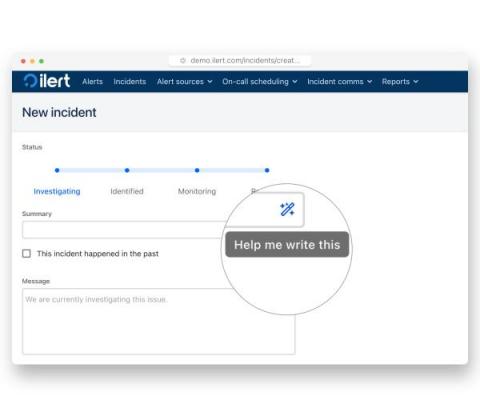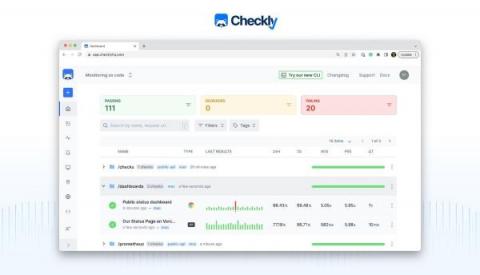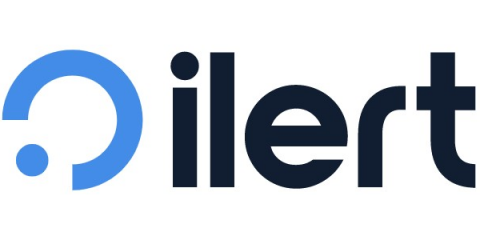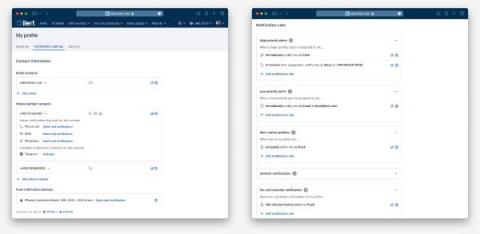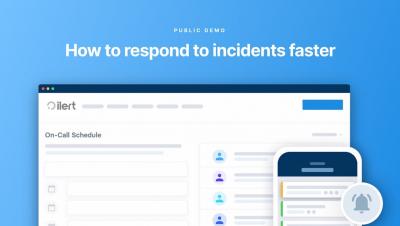Operations | Monitoring | ITSM | DevOps | Cloud
iLert
New features summer wrap-up: Evolving ChatOps, AI-assisted Incident Comms, and Time-based alert grouping
It is time to sum up the product updates that we introduced during summer 2023. As always, our focus has been on minimizing limitations in the incident response process and accelerating the workflow from acknowledgment to resolution. We invite you to contribute to the ilert roadmap by submitting your feature and improvement ideas here.
Synthetic monitoring as Code with Checkly and ilert
This post will introduce Checkly, the synthetic monitoring solution, and their monitoring as code approach. This guest post was written by Hannes Lenke, the CEO, and co-founder of Checkly. First, thanks to Birol and the ilert team for the opportunity to introduce Checkly. ilert recently announced discontinuing its uptime monitoring feature and worked with us on an integration to ensure that existing customers could migrate seamlessly. So, what is monitoring as code and Checkly?
Which Software Stack is best for IT service management?
IT-Incident Management - a hot topic and more important than ever in the digital age. Companies are increasingly relying on technology to maintain their operations, as any downtime can have catastrophic consequences. On average, one minute of downtime costs $9,000. Therefore, an efficient and especially organization-specific incident management system is essential. However, there are many components and options in incident management, so what software stack should you use?
New Features: Next-Generation Notifications UI, Take-On Call Widget, Alert Templates, Dynamic Policy Routing, Service Groups
This post highlights some of the features and improvements that we have released in the last two months. If you want to submit your own ideas or vote on existing feature requests, you can now use our public roadmap at roadmap.ilert.com.
IT Incidents vs. Alerts
IT incidents are events which lead to a disruption or deviation from the regular operating standards of a computer system or network. They can be caused by various factors, including hardware or software failures, human error, or even deliberate external (cybersecurity) attacks. It begins with short delays, or services cutting out - for example, when a website or server is down, or access to data(bases) takes too long.
Incident Management KPIs - what really matters
In the age of Big Data and analytics, companies are increasingly using the power of numbers and data to improve their processes. In the incident management world, this means turning to KPIs, metrics, and other incident monitoring methods to recognize trends and take corrective action. To manage and improve your incident management processes, you have to keep an eye on KPIs and metrics.
ITIL vs. ITSM - What's the difference?
Companies depend on IT services to support their business operations, and to meet the demands of their customers. ITIL (Information Technology Infrastructure Library) and ITSM (Information Technology Service Management) are frameworks to help organizations manage their IT services. While these two do have elements in common, they also have important differences. ITIL is a set of best practices for IT service management which emphasizes the alignment of IT with the needs of the business.
ITIL vs. DevOps: What is best for your organization?
When it comes to managing IT services, there are two schools of thought: DevOps and ITIL. DevOps is a newer approach, while ITIL has been around for decades. Both have their pros and cons, but which method is the right one for your business? Is ITIL still relevant in an era of cloud computing, artificial intelligence, blockchain and IoT?



